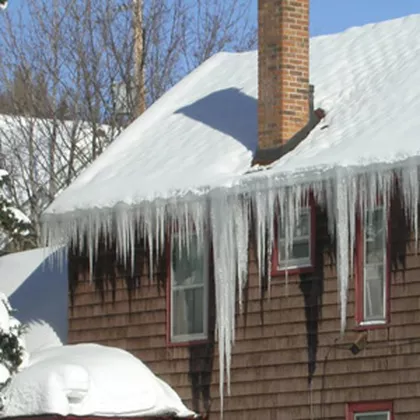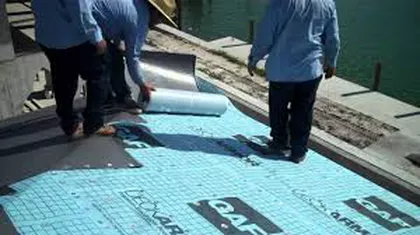It used to be that our roofing business was somewhat seasonal. We had to slow down considerably during the high heat of the summer months, and again when roofs were frozen with snow. There wasn’t much a roofer could do when temperatures reached 90 degrees with 100 percent humidity because it was too hot to handle the materials. We also were adversely impacted when mother nature sent 6 inches of snow down with persistent freezing temperatures.
That all changed years ago and now we are fully capable of roofing 12 months a year. There are 3 major changes that have taken place to make this possible.
The 3 Changes in Roofing That Make it a 12 Month a Year Service Are:
More Moderate Temperatures in the North East
Average winter temperature are more moderate in New Jersey making it easier to roof year round.
Improved Technology in the Manufacturing of Materials
The greatest change is in the manufacture of “Underlayments”. Underlayments are the layer beneath the roof (slate, tile, or shingles) and on the outside of the roof deck, which protects the home from heavy rain and wind.

It is a critical step in the repair and installation of new roofs – especially those with a steep slope. Previously, most underlayments were made of asphalt felt which absorbs moisture and can tear easily. Today we use a synthetic felt underlayment – made of polypropelene (made by GAF).
The benefits of synthetic felt are numerous; it comes in s a cool gray color which makes it far easier to install in the heat (black was the only color previously). it does’t tear when walking on it- making it faster to install, and it doesn’t absorb moisture and therefore won’t become brittle and crack.
New Tactics
One of the most important changes in the roofing business is we can now fix roofs that are experiencing ice damning issues while it is still freezing cold outside. How do you know if your home is experiencing ice damning? If you see icicles hanging off your roof, it is likely you have ice damning.
Technically, ice damns are a ridge of ice that form at the edge of the roof preventing proper drainage. They are caused by alternating temperatures of above freezing and just below freezing. So the snow begins to melt and then the water freezes. Another reason for ice damns is the heat from inside the home warms up the interior side of the roof, the snow starts to loosen, but the freezing temperatures outside transform it into ice.


Ice Damn on Roof
Icicles are a symptom of ice damning
1/4
The damn causes leaks inside the home. We used to have to wait until the majority of snow melted before we could repair the roof. Now, we can shovel off the snow, and remediate the problem before it does major damage. That’s why we are now not only a 12 month a year service, but we also are open 7 days a week.
The process is fairly straight forward. We tear off 3 feet of roofing material (slate, tile or shingles) back from the gutters and install “ice shield” along the perimeter. Ice Shield is a waterproof product that adheres to the roof deck with nails that counter sink (seal themselves – no holes). Then we install new roofing material (like slate, tile and shingles) over it.
Ice Shield is a product that was primarily used in colder states like New Hampshire and Vermont, but wasn’t available in New Jersey until the 1990’s. At that time, New Jersey state code changed making it mandatory to use ice and water shield to remedy the damage caused by ice damning. Even most home insurance requires require these products be used as well because they are so effective.
Another tactic that has changed making it possible to repair and replace roofs in the winter is for flat roofs. Flat roofs now use torches to lay down the modified roofing material, which makes it feasible to install in very cold temperatures since it is a hot roof.
So, what ever roofing issues you experience this winter — Michael J Harris Inc has you covered. We are available 24/7 for any and all emergencies.
